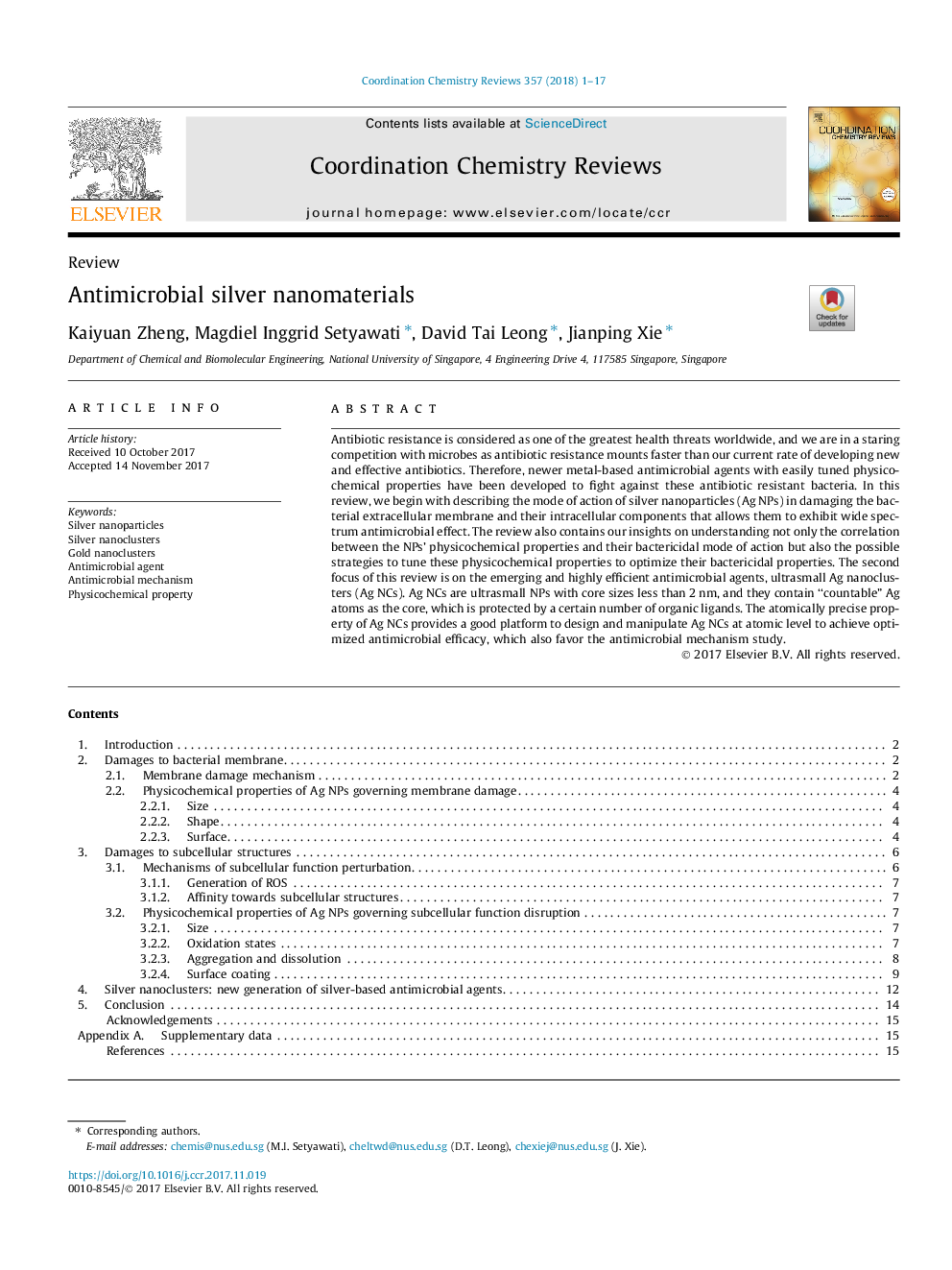| Article ID | Journal | Published Year | Pages | File Type |
|---|---|---|---|---|
| 7747704 | Coordination Chemistry Reviews | 2018 | 17 Pages |
Abstract
Antibiotic resistance is considered as one of the greatest health threats worldwide, and we are in a staring competition with microbes as antibiotic resistance mounts faster than our current rate of developing new and effective antibiotics. Therefore, newer metal-based antimicrobial agents with easily tuned physicochemical properties have been developed to fight against these antibiotic resistant bacteria. In this review, we begin with describing the mode of action of silver nanoparticles (Ag NPs) in damaging the bacterial extracellular membrane and their intracellular components that allows them to exhibit wide spectrum antimicrobial effect. The review also contains our insights on understanding not only the correlation between the NPs' physicochemical properties and their bactericidal mode of action but also the possible strategies to tune these physicochemical properties to optimize their bactericidal properties. The second focus of this review is on the emerging and highly efficient antimicrobial agents, ultrasmall Ag nanoclusters (Ag NCs). Ag NCs are ultrasmall NPs with core sizes less than 2â¯nm, and they contain “countable” Ag atoms as the core, which is protected by a certain number of organic ligands. The atomically precise property of Ag NCs provides a good platform to design and manipulate Ag NCs at atomic level to achieve optimized antimicrobial efficacy, which also favor the antimicrobial mechanism study.
Keywords
Related Topics
Physical Sciences and Engineering
Chemistry
Inorganic Chemistry
Authors
Kaiyuan Zheng, Magdiel Inggrid Setyawati, David Tai Leong, Jianping Xie,
